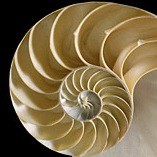While looking to verify something different in Surat Al-‘Alaq 96, I counted the number of words and letters in the first five ayat (96:1-5), which is said to be the first portion of the Quran to be revealed to prophet Mohammad (pbuh). The results are 21 words and 76 letters. If we add these two sums (something I often do with meaningful results), the total is 97, which is the number of Surat Al-Qadr, describing Laylatul Qadr, the night in which the Quran was sent down to the prophet.
It was the Spirit Jibreel (archangel Gabriel) who “brought it [the Quran] upon your [Mohammad’s] heart” (2:97), and the verse number that mentions this is also numbered 97! We can consider this to possibly mean all the Quran came down into the prophet’s heart, of which portions would be revealed over time. And it could also be that these five ayat were revealed in that same night. And so a connection between the sum of words and letters in these first revealed words and the night of their revelation could be made.
Continue reading
















